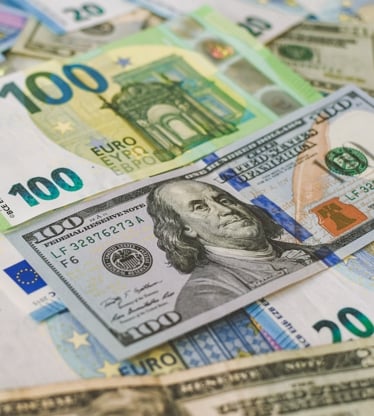The global payment map

The flow of cross-border payments has been severely impacted by the Coronavirus pandemic, with international trade all but grinding to a halt during the first half of 2020.
5 minute readWhilst the global economy started to recover in the latter half of 2020, many companies have become more aware of the inadequacies that exist within their existing supply chains and started looking at how they might deal with future public health disruptions.
This has led to the reports that we have seen of food and fuel supply shortages in the UK, with supply chain issues likely to affect consumers for the foreseeable future. Whilst the British government has taken a leading role in helping resolve some of the problems that we have seen – by, for example, introducing a number of measures to make up for the shortfall of 100,000 HGV drivers – it will be up to companies to ensure that their supply chains are pandemic-proof in the future.
According to the Petrol Retailers Association (PRA), which surveyed 1,200 garages across the UK in September 2021, 27% of stations had run out of petrol; just over half (52%) of stations had both petrol and diesel in stock. This is supported by analysis undertaken by Whitehall, which indicated that London, the South East and the North West had fuel levels below 20%. There is no doubt that the transition from a ‘just in time’ approach to a ‘just in case’ system is long overdue.
In this article, we’ll discuss the routes that are most popular for global payments, the impact that the Covid-19 outbreak has had, and the trends that we can expect in the years ahead.
What are the most popular routes for global payments?
The Asia-Pacific region leads the global payments revenue pool, accounting for approximately three quarters of global payment transactions, with North America in second place. Asia-Pacific also leads in terms of global non-cash transactions, with 243.6bn such transactions recorded in 2019.
Business-to-business (B2B) is the biggest driver of revenue in cross-border payments. They are expected to account for $150bn of the total $156tn cross-border payment flow by 2022, whilst C2B transactions, i.e. e-commerce and offline tourism spend, are forecast to make up $2.8tn of this total. Remittance payments will make up a very small chunk of the pie, at just $0.8tn.
What difference has Covid-19 made?
According to McKinsey, global payments revenues in the first six months of 2020 were 22% lower than in the first half of 2019. Whilst revenues picked up again in the second half of 2020, the total global payments revenue in 2020 is estimated to have been 7% lower than in 2019, a decline of $140bn.
We experienced just such a dip in the first half of 2020 ourselves: moneycorp processed $66.4m in corporate remittances sent from the United States in this period, which represented a dramatic year-on-year decrease. There was a marked recovery in the latter half of 2020, however: we dealt with $384m worth of corporate remittances during this period, a 479% increase on the first half of that year.
The first six months of 2021 point towards a slow, steady recovery, with moneycorp processing $173m in corporate remittances. Whilst this is less than half of the money transferred in the previous six-month period, it represents a 161% YoY increase and reflects the gradual return to economic normalcy that we have seen recently as America and the rest of the world start to recover from the Coronavirus outbreak.
Interestingly, the first two quarters of 2020 saw bigger drops in interregional than in intraregional trade. There was a 20% decrease in Europe, a 23% decrease in the United States and a 13% decrease in interregional flows for Asia. 2020 saw worldwide merchandise trade flows drop by 7%.
In addition to a reduction in payment volume, Covid has also brought about a number of interesting behavioural shifts. Social distancing measures and limits placed on business activities have driven a reduction in cash transactions and the number of purchases made in person. Customers and merchants have made a shift towards electronic and contactless payment options when completing transactions.
What shifts can anticipated in the future?
Moving forward, we can expect to see an increase in non-cash payments. The move towards virtual banking, as opposed to traditional physical banking, is likely to accelerate as it becomes more economical for banks to eschew the traditional bricks-and-mortar set-up. In order to remain competitive, it will make sense for payment firms to invest time and money in mastering the digital space.
We can also expect to see companies look at nearshoring as an option in the future. Nearshoring refers to a transfer of business operations, such as manufacturing, to countries that are closer to the location where there is high demand for those manufactured products. Given the disruption and dissatisfaction brought about by the pandemic, it makes sense for companies to nearshore key supplies. Such a move towards more localised supply chains would represent a partial halt, or even reversal, of globalisation. Due to the complexity of making such adjustments to a supply chain, this will most likely be a trend that becomes more apparent in the long term.


